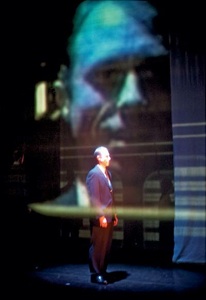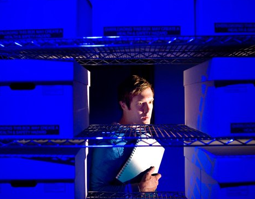Diaghilev and the Golden Age of the Ballets Russes 1909-1929
is an exhibition currently running at the V&A Museum in London. Not
knowing much about the Ballets Russes, I was interested to get an
accelerated learning experience.
It’s a smart, intelligent exhibition
which takes us through the state of ballet before Diaghilev set up the
Russes, shows us a wealth of costumes and designs, gives us videos of
Howard Goodall discussing Stravinsky, and takes us on a tour with the
company as they conquered the world. There are some tantalising glimpses
of their connections to High Modernism, including a couple of the
extraordinary, brilliant, completely impractical costumes for Parade. There are also some fascinating videos of recreations of Nijinsky’s choreography for The Rite of Spring
juxtaposed with Pina Bausch’s no less astonishing version. For no
terribly good reason, but oh how I lingered, there is a case with
manuscripts for In Search of Lost Time, Ulysses and The Waste Land. One room brilliantly gives us the backcloth for The Firebird - apparently the largest single item in the V&A’s collection - together with music and some choreographic video projection.
Almost every turn reveals something
lovely. There is a stunning pair of posters by Jean Cocteau from 1913
that are both monumental and mischievous. An instantly recognisable
Edward Gordon Craig watercolour of Isadora Duncan is an early thrill and
a little later a fascinating room is devoted to Nijinsky and includes a
strikingly good bust by Una Troubridge that reveals an extraordinarily
beautiful young man with high cheekbones, curious mocking eyebrows and a
perpetual pout. Easy to see why Diaghilev adored, loved, and jealously
protected this nymph. Towards the end of the exhibition we revisit a
1967 auction of the costumes, where they were sold rather cannily as
psychedelic outfits for a generation newly re-enchanted with colour and
primitivism. One of the Ballets Russes’ dancers is shown on video
marvelling at being briefly reunited with her original costume. There is
a generous array of Goncharova drawings and designs and she certainly
emerges as a remarkable talent. (Her futurist caricature of Diaghilev is
above.)
It’s only partly an exhibition about the
Ballets Russes. In many ways it’s really an exhibition about how to
exhibit dance. Dance is shown in film, in sculpture, in sketches and
photographs, in painting, video, notation, in testimony, and in music
and other remnants. Dance is there to be imagined in the costumes which
hang on their stands looking magnificently inert; you draw on the energy
of the music and colour around you to imagine that costume on the back
of a dancer, defying the earth for ever longer intervals. It offers
remnants proudly, without trying to fill the gaps - a huge map showing
all the places in Europe and the Americas that they played is
illustrated with a handful of postcards from a member of the company;
it’s obviously at some distance from Balanchine and Bakst but it gives a
sense of a whirl of social energy that surrounded and bore up those
whirls of choreographic energy.
Appropriately, it feels theatrical as an
exhibition. We move between spaces through prosceniums and exhibits are
framed and lit with an enormously dramatic sense of space. Red and
black are the background colours; it’s an exhibition that emerges from
the dark, offering sensations rather than analysis. It’s a very sensual
exhibition.
I’ll admit that, not knowing much about
the company, some of the significance of what I was seeing passed me by.
While some of the costumes are remarkable in their modernity, like Léon
Bakst’s stunning Shepherd’s costume for Narcisse
(1911), printed or hand-painted in strong, simple, organic shapes in
blue and orange, a lot of them rather passed me by, but I accept it’s
not you it’s me. Perhaps because I know little, I jibed at little at
being steered so firmly: this is mostly at the beginning, where I began
to feel that the whole of dance before the Russes was being trashed in
preparation for Diaghilev to take the stage. We are shown some stiff and
awkward opera costumes; there’s an interesting showreel of some rather
decorative, twee and facile little dances. I wished I’d known more,
because I wanted to ask what were these ballet and dance forms thought
to be at the time? What were the dancers and choreographers doing? It’s
so terribly distorting to read an artistic practice in the light of what
is about to emerge unbidden.
But it’s a very enjoyable couple of hours and while it may feel a bit long, you really need to get to the end to realise how full and rich the whole experience has been, the remarkable journeys you’ve followed them on.


![photo[1].jpg](https://images.squarespace-cdn.com/content/v1/513c543ce4b0abff73bc0a82/1362919072201-PZO854G4SEB794DVOEI8/photo%5B1%5D.jpg)
